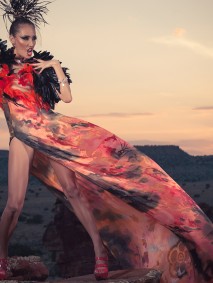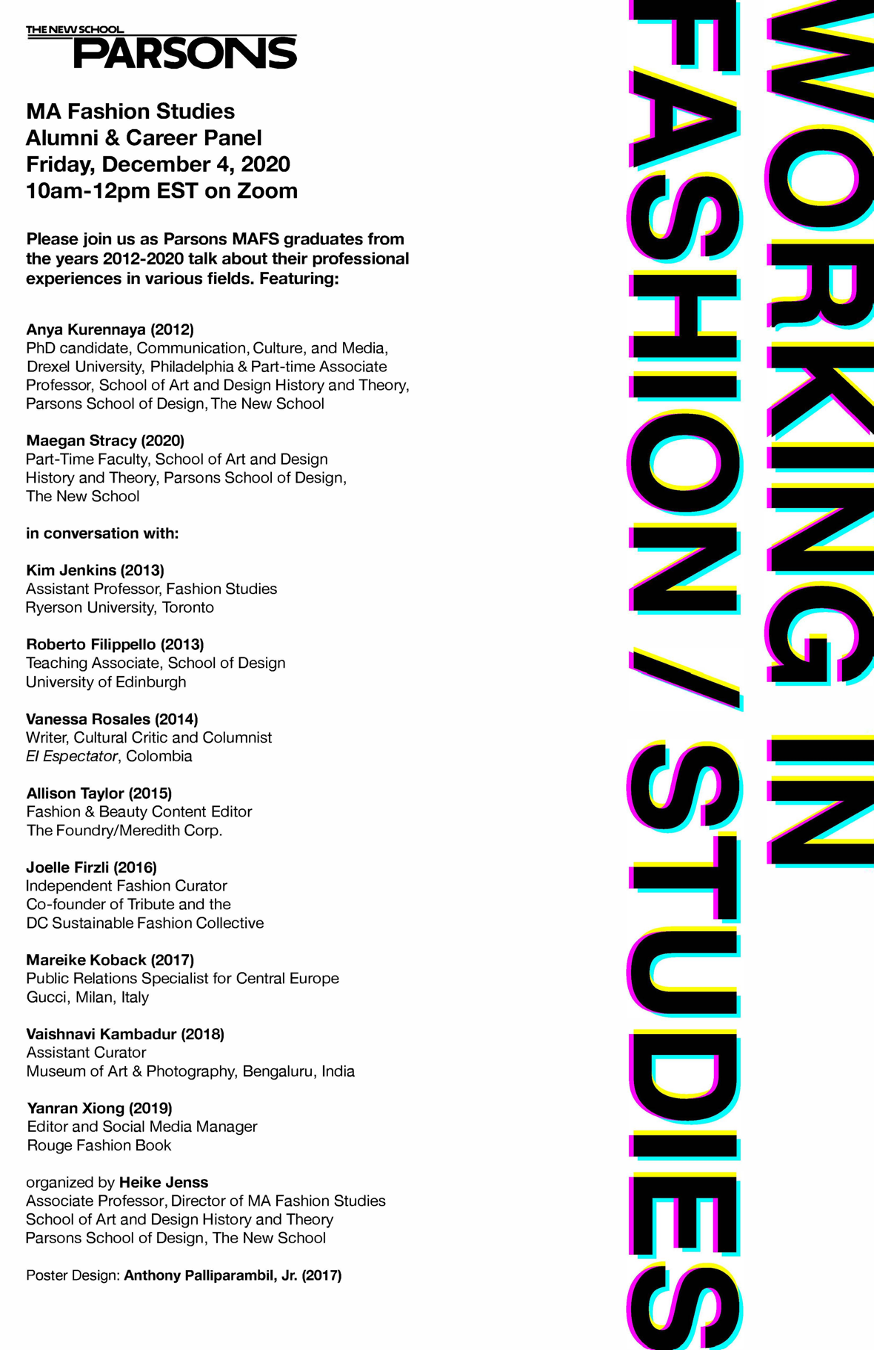Fashion Studies
Parsons School of Design's MA Fashion Studies
Nicole Rivas MAFS ’14 Interviews Patricia Mears, Deputy Director for The Museum at FIT
This past December, Nicole Rivas MAFS ’14 had the opportunity to interview Patricia Mears, Deputy Director for the Museum at the Fashion Institute of Technology for LIVELY magazine. LIVELY describes itself as “a cutting edge online magazine that brings together art, architecture, design and fashion, celebrating creativity in all of its various expressions.” Beginning as an intern, Nicole soon became a Writing Contributor, completing articles on emerging artists in diverse creative industries as well as interviewing emerging and established artists and designers.
After visiting the successful, evocative Ivy Style exhibition this past fall at The Museum at FIT, Nicole chose to interview Patricia Mears, who played an integral role in the project. Nicole and Patricia discussed fashion exhibition design, the current state of fashion curation, the installation process, and future projects at MFIT.
Below is an excerpt from the interview:
How did you get started in the fashion industry? And how did you start working as a Deputy Director for the Museum at F.I.T?
I never really worked in the fashion industry. Fortuitously, my first position in the field, while still a graduate student at FIT, was as the NEA- sponsored intern at the Brooklyn Museum. That institution had one of the world’s great costume and textile collections. (It was recently transferred to the Metropolitan Museum’s Costume Institute). Not only did I have ready access to fabulous 19th century garments including couture by Worth, Doucet, and Pingat, I was able to study wardrobes belonging to such legendary women of style such as Millicent Rogers, who was best known as a client of Schiaparelli, Mainbocher, and Charles James.
After 12 years at the Brooklyn Museum, I worked as a freelance curator before being offered a position by Valerie Steele at The Museum at FIT (MFIT). I was hired as a research curator in 2005 and became MFIT’s deputy director a year later.
Where did your passion for understanding fashion as cultural, sociological and historic phenomena come from?
I strongly believe passion for this material is really something you are born with. This seems to be true for everyone in the field of fashion I know and respect, be he or she a designer or a scholar.
Of course, the historic and cultural side of fashion is fascinating and very necessary if you want to be a curator. But my desire was to become something of a connoisseur. I know this rather old-fashioned approach runs contrary to the current and growing interest in fashion theory. The problem is that fewer and fewer curators today understand the particulars of clothing. Basic construction, for example, is almost never taught.
While working at the Brooklyn Museum was great, there was nobody to teach me about the objects. The opportunity to work with leading dealers of historical clothing proved to be so important. Titi Halle of Cora Ginsburg, Beverley Birks, as well as the Vionnet specialist, Betty Kirke, were invaluable in teaching me how to look at and analyze material.
Your eye for visual and intellectual analysis extends in so many different areas, where do you find the inspiration for each project?
Initially, inspiration came readily because I knew so little. Every new object or every designer I read about was so interesting. As time went on, my quest was to understand how the greatest couturiers, those who were both master technicians and possessed peerless aesthetic visions, crafted their designs. To this day, the objects remain the greatest source of inspiration for me.
Can you describe what the process is like when determining a specific theme for an upcoming exhibition?
Each and every exhibition comes about differently. In some cases, such as the Impact exhibition I co-organized with the CFDA in the spring of 2012, it was that organization’s president, Diane von Furstenberg, who set upon the idea. This year was the CFDA’s 50th anniversary and she wanted a special exhibition and book to commemorate its founding.
In other cases, I present ideas that I have worked on years ago, such as Madame Grès. She was the subject of my master’s thesis and I wrote it back in the early 1990s. It was wonderfully fortuitous that MFIT gave me the chance to present a retrospective of her work in 2008.
More unique are shows such as my current project, Ivy Style. The process of organizing this project was very organic. I spent my entire career focusing on modern, high style women’s fashion. With Ivy Style, I was a neophyte who had entered the world of menswear. About three years ago, as the economy was faltering, designers had to produce an increasing number of collections and more garments per season, more seasons per year, and more ancillary items such as accessories – all across a broad spectrum of styles. Such pressure has forced many to shutter their businesses, reduce their output, or tragically succumb (as in the cases of Alexander McQueen, who took his own life in 2010, and John Galliano, who emotionally disintegrated and was fired from the house of Dior in 2011). Add to this mix the explosion of celebrity designers and reality show designer wannabes, and I was left with far too much raw fashion to view, let alone digest and ponder. I had grown tired of fashion. Unintentionally, I found myself searching for clothes worn by real people in real (but also beautiful) settings. I was looking for a kind of nonchalance, or ease. I wanted objects that were well made, with real purpose. This new desire led me to discover and embrace “Ivy style” – a look that transcends and endures, is historic yet modern, and is quintessentially American, yet also global.
Can you describe the most difficult challenge about your craft?
The hardest part of my job is finding the time to do real research. Museums are becoming businesses. Curators have to produce more exhibitions and more books while focusing on a growing array of administrative duties. While I am truly fortunate to do so many wonderful projects, I think it would be nice to have a little more time for each. But I cannot complain. The opportunities greatly outweigh the demands.
Be sure to read Nicole’s full interview with Patricia Mears on the LIVELY website.




